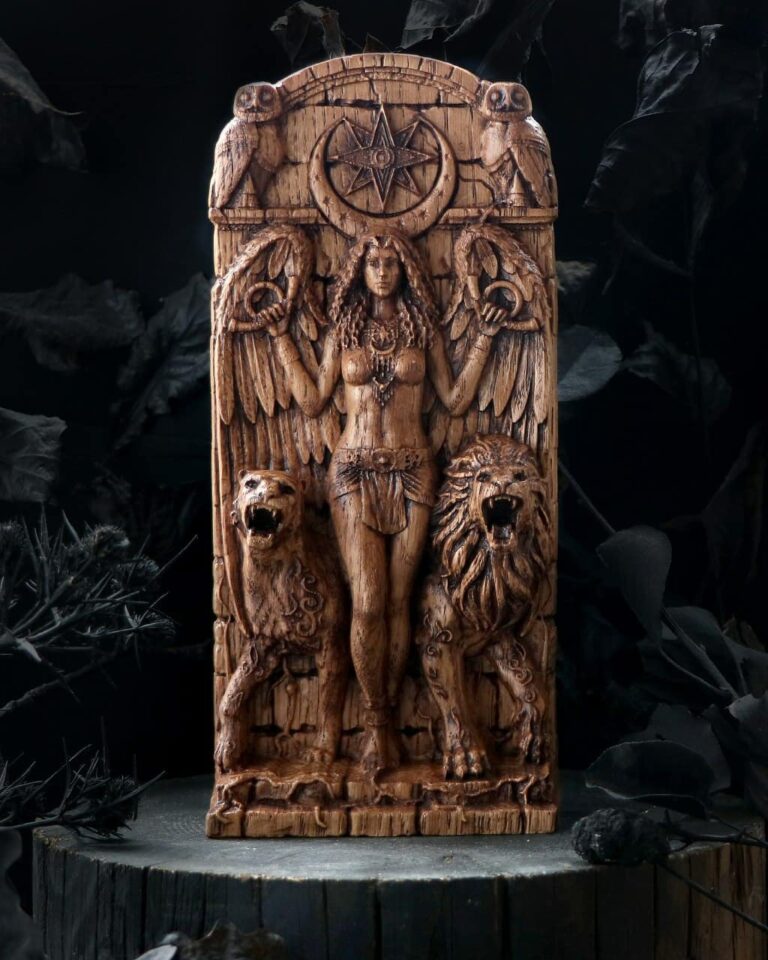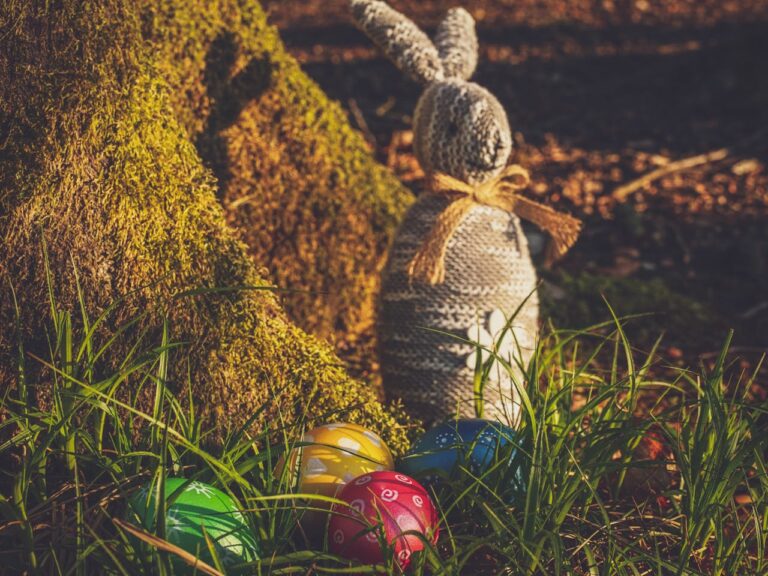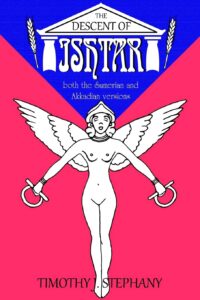Every year, Christian families around the world celebrate Easter by decorating eggs, enjoying Easter baskets filled with chocolate, and watching their kids hunt for treats left by the Easter Bunny. But have you ever wondered where these quirky traditions come from? While Easter commemorates the resurrection of Jesus Christ, many of the holiday’s most beloved symbols can be traced back to the ancient fertility rituals of the Mesopotamian goddess Ishtar.

Who Was Ishtar?
Known by various names like Inanna, Astarte, and Eostre, Ishtar was one of the most important deities in ancient Mesopotamian religion and mythology. As the goddess of fertility, love, sex, and war, she was revered by the Assyrians, Babylonians, Phoenicians, and other civilizations throughout the Near East and Eastern Mediterranean.
Ishtar’s most prominent symbols were the lion, the gate, and the eight-pointed star, but she was also closely associated with rabbits and eggs – two icons that would become deeply rooted in Easter traditions thousands of years later.
- Elements: Ishtar was associated with both Earth (fertility) and Water (Venus born from sea foam).
- Symbols: 8-pointed star, gate, lion were her prominent symbols.
- Colors: Blue and green were sacred colors representing heaven/fertility.
- Number: 15 had significance in her myths.
- Gemstones: Lapis lazuli and emerald were linked to Ishtar.
- Planet: Venus was her celestial counterpart.
- Day: Friday (dies Veneris) was sacred to Venus/Ishtar.
- Animals: Rabbits, hares, and lions held importance.
- Plants: Rose and date palm were associated with her.
- Tree: Cedar tree was considered sacred.
- Metal: Copper was her symbolic metal.
- Perfume: Myrrh was burned in rituals for Ishtar.
- Anatomy: The vulva was her symbolic representation of fertility.
- Direction: East, where Venus rises, was sacred.
- Festival: Akitu celebrated Ishtar’s return at the vernal equinox.
This covers many of the key esoteric and mystical correspondences aligned with the goddess Ishtar and her various aspects across cultures. Her symbols and associations held great significance in ancient Near Eastern religions and mythology.
The Return of Ishtar and Spring Renewal
According to ancient texts, Ishtar’s return from the underworld each spring was celebrated during the Akitu festival, which took place around the vernal equinox. This coincided with the rising of the constellation the Pleiades, which the Mesopotamians called “the star of Ishtar.”
The arrival of Ishtar was seen as a blessing of renewal and the rebirth of nature after the cold, barren winter. Parades were held in her honor with revelry, feasting, and sacred sexual rites to encourage fertility among people, crops, and livestock in the coming season.
The Symbols of Fertility
What did rabbits and eggs have to do with Ishtar’s springtime return? In many ancient pagan cultures, including those that worshipped Ishtar, the rabbit was a symbol of fertility due to its reproductive ability. Eggs held similar meanings as representations of fertility, rebirth, and the renewal of life each spring.
These potent symbols were adopted into the rituals and celebrations held for Ishtar at the time of the vernal equinox. Offerings of rabbits and eggs were left at her temples and shrines. It’s theorized that this early veneration of rabbits and eggs gradually evolved into the Easter traditions we recognize today.

From Ishtar to Easter
So how did the ancient goddess’s spring rituals become linked with the Christian celebration of Easter? Some scholars believe the name “Easter” itself derives from “Ostara” or “Eostre,” an Anglo-Saxon fertility goddess whose pagan festivals were eventually overlapped with the observance of Christ’s resurrection as Christianity spread.
The first recorded use of the term “Easter” in relation to the Christian holiday was in the 8th century by the English monk Bede. He stated that the month we now call April was known as “Eostur-monath” by pagan Anglo-Saxons, likely named for their goddess of spring and renewal.
In other parts of the world, various forms of Ishtar’s name like “Isthar” and “Ostara” were used to refer to both the vernal equinox celebrations and eventually the Christian holiday celebrating the resurrection of Jesus.
Blending of Traditions
As Christianity moved into pagan lands, new converts often held onto some of their cherished traditional spring celebrations and symbols. By the 4th century, missionaries were attempting to merge the stories and iconography of Christianity with existing native folk customs and beliefs.

Hey there! We hope you love our fitness programs and the products we recommend. Just so you know, Symku Blog is reader-supported. When you buy through links on our site, we may earn an affiliate commission at no extra cost to you. It helps us keep the lights on. Thanks.
Disclaimer: The information provided in this discussion is for general informational and educational purposes only. It is not intended as medical or professional advice. Only a qualified health professional can determine what practices are suitable for your individual needs and abilities.

